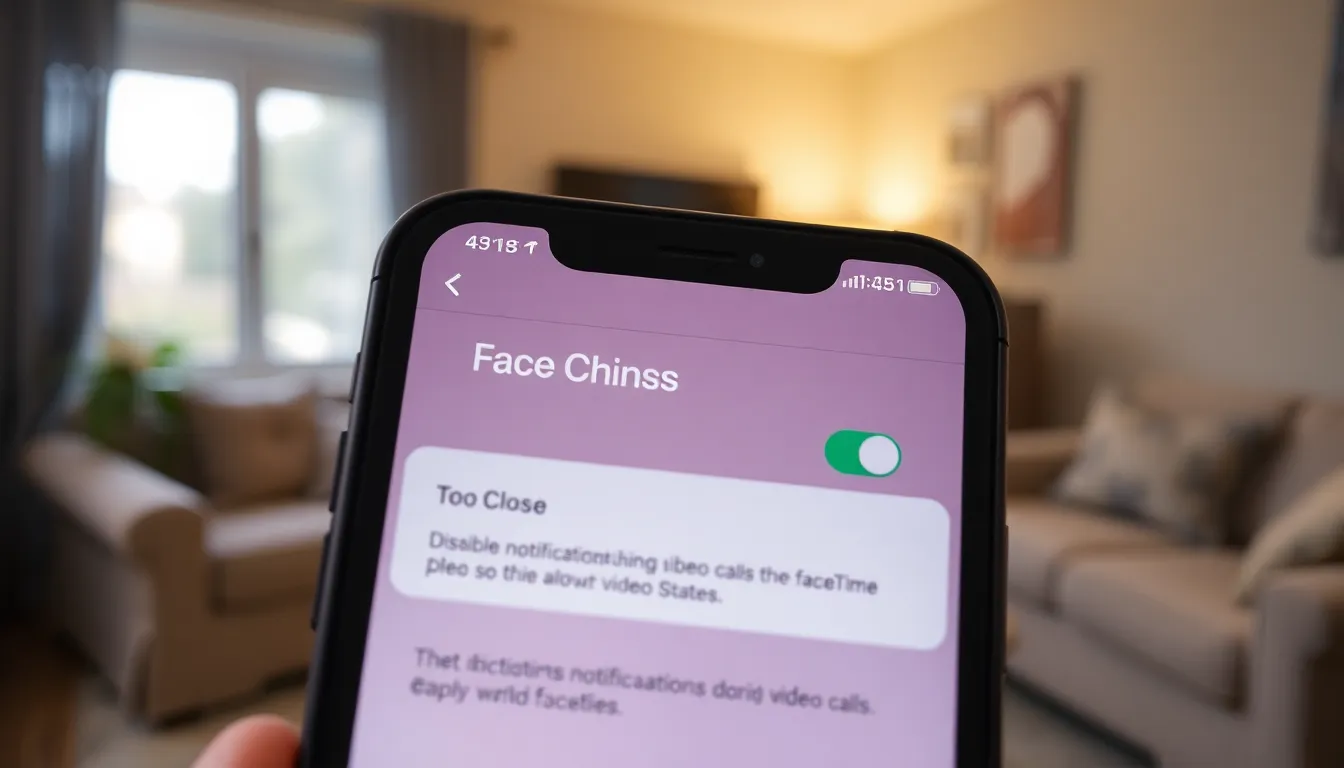Ever been in the middle of a video call when your iPhone suddenly decides your face is too close? It’s like your phone’s taken up a new career as a personal space advocate. While it’s great to have a device that looks out for your comfort, sometimes it just gets a little too overzealous.
Table of Contents
ToggleUnderstanding Face Too Close Feature
This feature activates a warning when it detects a user’s face too near the camera lens during video calls or selfies. It ensures users maintain an optimal distance for clarity and focus.
What Is Face Too Close?
Face Too Close represents a function designed to enhance video quality. This function alerts users when their face is located within six inches of the camera. The intention centers on improving visual experience during video calls. Enhanced image quality results when users maintain an appropriate distance. Most commonly, users encounter this alert during spontaneous video chats or when taking selfies.
How It Affects Camera Usage
Face Too Close impacts camera usage by prompting unwanted notifications during calls. Users may find themselves interrupted as they move closer to the device. Notifications can distract from conversation flow and engagement. This feature leads to frustration when users forget the distance guidelines. Maintaining a proper distance ensures a smoother video experience and eliminates unnecessary alerts. The warning typically appears just as users frame their shots, potentially compromising picture quality.
Step-by-Step Guide to Turn Off Face Too Close

Turning off the “Face Too Close” feature on an iPhone can enhance the video calling experience. Follow the steps below for a straightforward process.
Accessing Settings
Open the Settings app on the iPhone. Look for the option labeled “FaceTime” in the list. Tapping on it reveals various video call settings. Scroll through until finding “Video” options. This section contains essential settings that affect video quality. Locate the “Face Too Close” feature within these settings.
Disabling the Feature
Toggle the switch next to “Face Too Close” to disable it. A gray switch indicates the feature is off, ensuring no more unnecessary notifications during calls. Users might notice an immediate improvement in their video call experience without distractions. After disabling the feature, exit the settings to complete the process. Enjoy smooth and uninterrupted video conversations on the iPhone.
Troubleshooting Common Issues
Users may face challenges even after turning off the “Face Too Close” feature.
What If the Feature Doesn’t Turn Off?
If the feature doesn’t deactivate, restarting the iPhone often resolves minor glitches. Users can also check for software updates in the Settings app. Outdated software may prevent changes from taking effect. After downloading updates, they should retry the steps to turn off the feature. Resetting all settings can also help; however, it restores settings to factory defaults and may alter Wi-Fi passwords.
Additional Camera Settings to Check
Other camera settings may also influence the experience. Users should examine the FaceTime settings for any related options. Look for enhancements like low-light mode or HDR that may interfere with video clarity. Adjusting these could improve performance and might resolve issues with face detection. Configuring apps that utilize the camera can also impact functionality. Users can disable any filters or effects that alter the camera’s behavior, ensuring optimal performance during video calls.
User Feedback and Experiences
Users often share mixed reactions regarding the “Face Too Close” feature on iPhones. This section highlights the range of feedback to provide insights.
Positive Reactions
Many users appreciate the intention behind the “Face Too Close” feature. They find that it enhances clarity during video calls by encouraging optimal distance from the camera. Users often express gratitude for the feature’s ability to remind them to adjust their positioning, which results in improved video quality. Reports indicate smoother conversations after disabling the feature, allowing for a more relaxed experience. Some users also note reduced interruptions, creating a seamless flow in discussions. Overall, the feedback underscores a positive reception when the settings align with user preferences and expectations.
Negative Reactions
Conversely, numerous users experience frustration with the “Face Too Close” alerts. Complaints often arise during spontaneous video chats, where interruptions can disrupt the flow of conversation. Users describe the notifications as intrusive, drawing attention away from the discussion. Reports highlight that even after disabling the feature, some devices continue to trigger it unexpectedly. Technical glitches contribute to further dissatisfaction, leading users to question the reliability of their devices. Overall, negative feedback centers around the feature’s disruptive nature during casual conversations and its propensity to misinterpret user positioning.
Disabling the “Face Too Close” feature on an iPhone can significantly enhance the video calling experience. By following the simple steps outlined earlier, users can eliminate those pesky notifications that disrupt conversations.
It’s essential to keep in mind that technical glitches can occur even after turning off the feature. Regularly checking for software updates and adjusting camera settings can help maintain optimal performance.
User experiences vary widely, reflecting a balance between appreciating the feature’s intent and dealing with its interruptions. Ultimately, customizing settings to fit personal preferences can lead to smoother and more enjoyable video calls.


